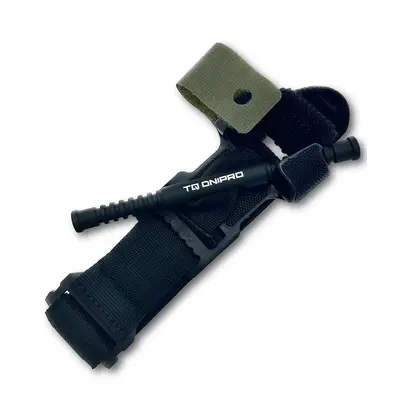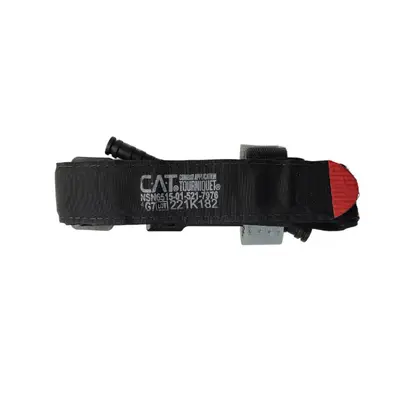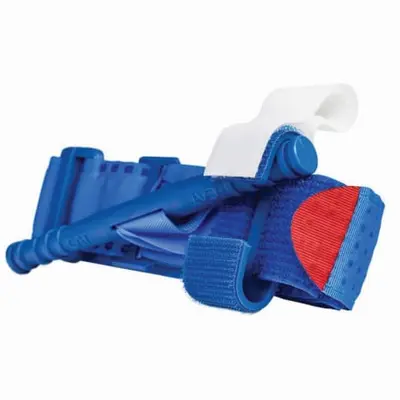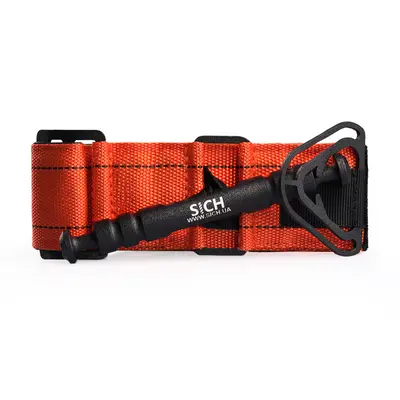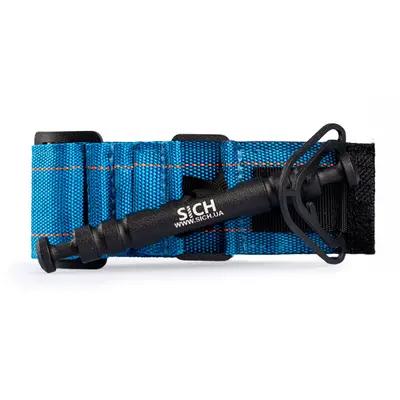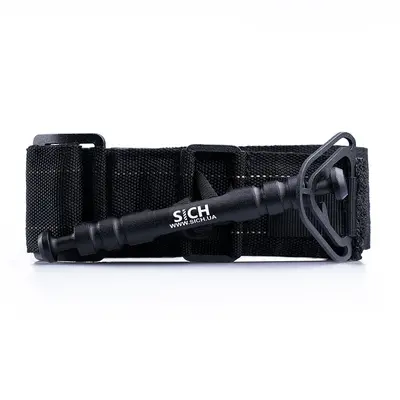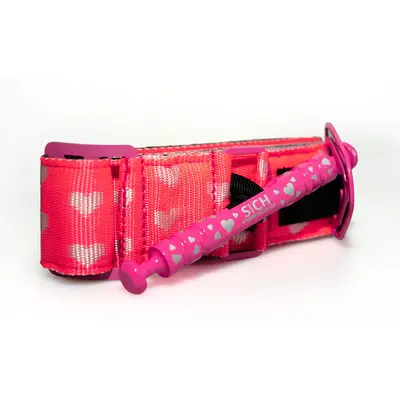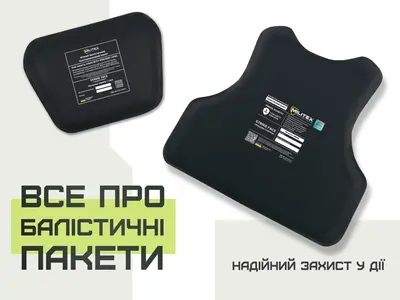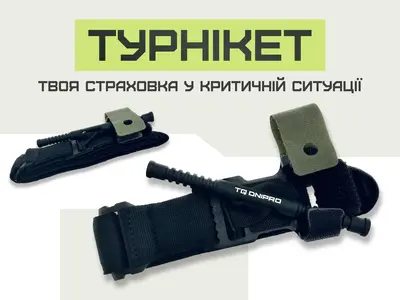A tourniquet is a device necessary for quickly stopping severe arterial bleeding from the lower/upper limb (leg/arm).
The use of a tourniquet for the military is especially important in the following common situations:
When bleeding threatens the life of a soldier (for example, a jet, pulsating flow, when the bandage is quickly filled with blood).
When a soldier is injured in active combat, and therefore there is no time to wait for help.
When other methods of stopping bleeding are absent or insufficient (for example, the use of bandages).
It is important to remember that a tourniquet is called an emergency measure to stop bleeding in the lower/upper limbs. After applying it, it is necessary to quickly switch to other no less effective methods to stop bleeding: tight wound tamponade, bandaging. In case of bleeding from the neck, torso or groin area, a tourniquet is not applied.
You can choose the appropriate type of tourniquet in the catalog " tactical medical equipment ", which offers a large assortment of various accessories, items that must be in the arsenal of every soldier.
The main types of toursitons
There are various toursitons on sale to choose from, which are actively used by the military and medics in order to save the life of a soldier in particularly difficult conditions.
Today, the following options are known:
- Esmarch-type tourniquet. More modern versions of such tourniquets are called SWAT and OMEGA models. They are rarely used by military personnel and are certified for civilian use.
- CAT (Combat Application Tourniquet) tourniquet. This is one of the best tourniquet options for the military, successfully combining a high degree of reliability with ease of use.
- Ratcheting-type tourniquet. The presented options are included in the standard program of tactical assistance to the wounded on the battlefield.
- Pneumatic tourniquets. Such tourniquets are often found in the first-aid kits of American soldiers, but similar tourniquets are also very common in Ukraine.
- SAM Medical. This tourniquet is called an innovative solution when first aid is needed in the field.
Before being released into mass production, all modern harness variants undergo mandatory tests to prove their effectiveness in operation.
Main indications: when to apply a tourniquet
A tourniquet is a temporary measure, so it should be taken into account the maximum time for applying a tourniquet so that its use does not lead to serious consequences. Therefore, it is important to monitor the victim's condition, monitor changes in breathing rate, pulse, and skin color.
Indications for applying a tourniquet:
Visible arterial bleeding is a large and rapid loss of blood.
- Severe blood loss that threatens the fighter's life, and other methods of stopping bleeding are ineffective.
There has been amputation of a limb/serious soft tissue destruction where it is particularly important to stop bleeding quickly.
It is better to apply a tourniquet on time than to lose precious time: in the case of massive arterial bleeding, the slightest delay becomes life-threatening.
How to apply a tourniquet correctly?
The ability to quickly and correctly apply a tourniquet is vital in conditions of active combat, when it is necessary to promptly help a wounded soldier. In order not to get confused at a crucial moment, you should take into account several useful recommendations.
Preparing the turnstile for use
First of all, you should carefully inspect the tourniquet from all sides - there should be no visual damage, tears or other defects on its surface. Otherwise, it will be impossible to properly fix the tourniquet and adjust it, which becomes a problem when stopping bleeding.
During a visual inspection, primary attention should be paid to:
The mechanisms responsible for fixation and adjustment. Therefore, before applying the turnstile, these mechanisms need to be quickly checked.
Fasteners, Velcro tapes. High-quality, undamaged elements prevent the tourniquet from accidentally opening.
It's best to check your harnesses before you pack them in your bag and head out on a mission. It's a good idea to have several types of harnesses on hand.
The right place: where exactly to apply the tourniquet?
Before applying a tourniquet, the first thing you need to do is quickly locate the injured artery. Helpful tip: First, feel for a pulse on the injured limb and apply a tourniquet near it.
It is worth choosing soft areas of the body. It is not recommended to use a tourniquet on areas with deep and large wounds, bones. Such actions can lead to an insufficiently reliable degree of fixation. As a result, the following rule applies: the faster and more accurately the tourniquet is applied, the higher the probability that any complications and serious risks to the fighter's life will be excluded.Fighter training
Before using the tourniquet, attention should be paid to another equally important stage - preparation of the soldier. It is necessary for the wounded person to take the most comfortable position for himself, since the process of applying the tourniquet can cause special discomfort and unpleasant painful sensations.
The fighter must be in a stationary position in order to perform all actions quickly and correctly during fixation.
Applying a tourniquet: basic rules
When performing the entire procedure, you must follow a certain order of actions.
The technique for applying a tourniquet is as follows:
The tourniquet is turned around the injured limb above the area where the blood is flowing.
The edge of the strap is threaded through the inner slot of the buckle and the tourniquet is tightened tightly.
The tape is attached around the injured limb using double-sided Velcro.
The rod is tightened until the bleeding stops completely and the peripheral pulsation disappears.
It is important to maintain ideal tension – the tourniquet should be well tightened, but not cause additional trauma to the injured limb. Otherwise, impaired blood circulation in this area and necrosis of soft tissues are noted.
How do you know if the tourniquet was applied incorrectly?
After the tourniquet has been applied, it is necessary to check that it is correctly fixed. Among the main signs of an incorrectly applied tourniquet, the following should be highlighted:blueness of the skin at the fixation site;
the presence of a pulse that is below the location of the tourniquet;
swelling of the limb after applying a tourniquet.
In this case, it is necessary to remove the previously applied tourniquet and immediately change its position according to the fixation rules.
Features of using a tourniquet for different types of wounds
Before using a tourniquet, soldiers must know and remember the basic rules for applying it to certain types of wounds. After all, during active combat operations, a soldier may receive wounds of a certain degree of complexity with some features:
If there is damage to the elbows or knees, a tourniquet is not used in these situations. After all, the vessels in these areas are securely hidden between the bones, and therefore a tourniquet applied will not help stop the bleeding. The only thing a tourniquet will do is damage the soft tissues around the joint.
If the bleeding is in the groin or neck area, the first thing to do is to press the wound with a finger/hand, not forgetting to use a glove beforehand. Next, a tampon prepared from a bandage/hemostatic gauze should be applied to the wound. After that, do not remove the finger/wound, continuing to press on it for 3 minutes. In this situation, a tourniquet is also not applied.
If bleeding has started in the torso area, the open wound is pressed with a hand or a piece of clean cloth, not forgetting to monitor the pulse and breathing of the wounded soldier. Pressure on the wound should be applied in such a way that it does not affect the wounded soldier's breathing in any way.
Maximum time: how many hours can a tourniquet be applied?
One of the main questions is the question of the time of application of the tourniquet: how many hours is the tourniquet applied for? The tourniquet can be used for 2 hours - this is a safe time for applying the tourniquet, which will not lead to serious consequences.
If you use a tourniquet for a long time, damage to soft tissues and nerves occurs, which causes necrosis. All this can lead to the need for amputation of the damaged limb. Therefore, immediately after applying the tourniquet, it is necessary to record the exact time of its application (the time is indicated to the nearest minute). Thus, it is much more convenient to control the duration of use for its intended purpose.
A tourniquet duration of 2 to 6 hours can be considered relatively safe. Moreover, a tourniquet that was applied 6 hours ago should be removed by a qualified doctor.
After fixing the tourniquet, it is necessary to take all measures to deliver the wounded soldier to the nearest medical facility as soon as possible. After all, the task of a qualified doctor is to assess the general condition of the wounded soldier, the effectiveness of the tourniquet, and take further measures for treatment.
When transferring/transporting a wounded person, it is important to check the tourniquet from time to time, because during transportation its strength and correct fixation may be impaired. It is important to know and remember: applying a tourniquet is called an exclusively temporary measure to stop bleeding in the area of the extremities - upper or lower. Therefore, seeking medical attention is a prerequisite that should not be abandoned.


